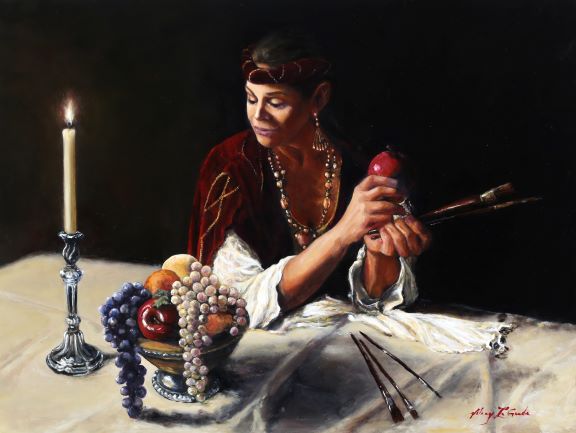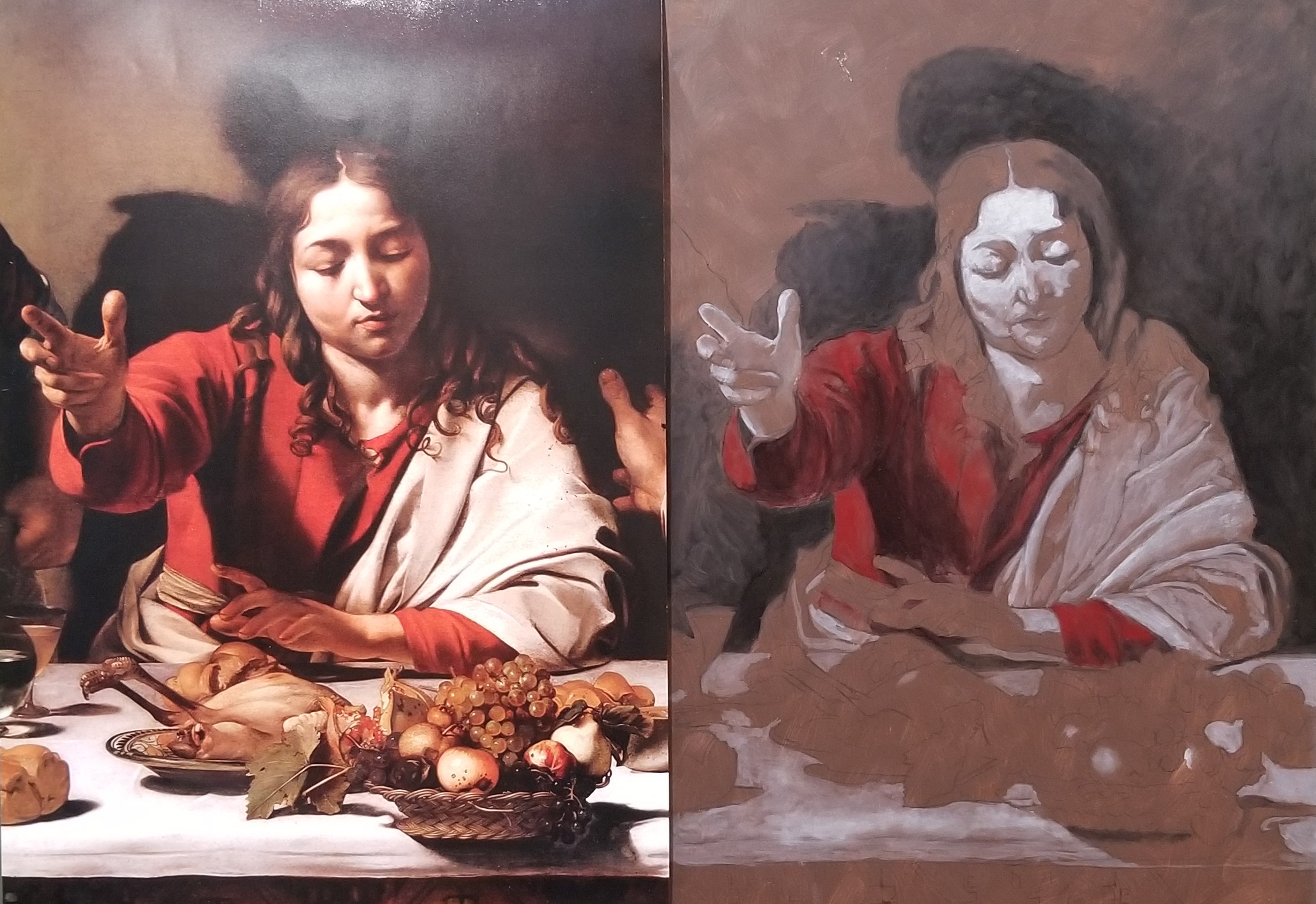I look to the past in art to find my way forward. Studying the techniques used by Caravaggio will hopefully help move my art to a new level. Quality is essential. My hope is this workshop will help me to paint beautiful subjects so they can be seen by future generations.
Caravaggio created theatrics with a brush and oil paint. What made him different was his use of bold contrasts between lights and darks, a technique known as chiaroscuro. Our instructor Fernando Freitas explained that it is all in the underpainting. Caravaggio worked directly on the canvas. Most artists at that time had to create a drawing and to transfer the drawing to their canvas. Caravaggio, on the other hand, had to work fast because he was always being chased by the law.
For my painting, I chose to paint the “beardless Jesus” from Caravaggio’s “The Supper at Emmaus”. Here’s a photo of that painting.
To start our paintings, we covered our gessoed wood panels, with a mixture of red oxide brown-toned oil paint. This procedure is called “imprimatura”. It’s an initial stain of color that serves as the first paint layer. Most artists used a lighter tone for their imprimatura. Caravaggio chose to go much darker. For example, on a value scale of one to nine with one being white and nine being black, most artists used a level four whereas Caravaggio used a level seven.
After we drew the subject matter onto the panel, the real work began this morning. We applied lead white to the shapes and forms to build up volume. This was done to create dramatic lighting. We had to reverse the way we thought of lights and darks. In essence, we were painting something akin to a photo negative. This procedure is called the impasto. The idea is to identify each shape in the subject matter to paint light over the form. For example, a nose may have a highlight but it also has light, a core shadow, reflected light, and a cast shadow. Each of these types of light have to be carefully handled to make the nose appear real.
This stage is ironically called the “drawing” stage because even though you are using paint, you are drawing shapes using these aforementioned principles.
On my palette today, I simply used medium mixed with oil paint in the colors of lead white and ivory black. I had to be careful to keep my brushes separate to keep the white out of any and all shadows while I blocked in the shapes and form,
Tomorrow we will be working on local or “dead” color. Here’s a picture of today’s progress on my painting.



